The Olympic Games are a celebration of the human spirit, showcasing the dedication, perseverance, and physical prowess of athletes from around the world. These events inspire us and unite us, as we cheer on our favorite competitors and marvel at their incredible feats. However, amidst the excitement and camaraderie, there is also an undeniable element of risk involved. In the pursuit of Olympic glory, accidents can and do happen, sometimes with tragic consequences. To shed light on these less-celebrated moments, we’ve compiled a list of some of the worst Olympic accidents in history.
Our list of Olympic accidents serves as a somber reminder of the high stakes involved in competitive sports. These incidents, which span across various disciplines and editions of the Olympic Games, reveal the physical and mental challenges faced by athletes as they push their bodies to the limit in pursuit of their dreams.
While these accidents can be difficult to read about, they also provide important context for understanding the true dedication and courage of Olympic athletes. The risks they face are not just a test of their physical abilities, but also of their mental fortitude and resilience. In many cases, these athletes display incredible strength and determination in the face of adversity, exemplifying the true spirit of the Olympic Games.
As you explore our list of worst Olympic accidents, you may find yourself experiencing a range of emotions, from shock and sadness to admiration for the athletes involved. These incidents serve as a powerful reminder of the inherent risks associated with high-level sports and the immense pressure these competitors face in their quest for Olympic success.
So, as you delve into our compilation of Olympic accidents, remember to approach these stories with empathy and respect for the athletes involved. Their experiences offer valuable lessons about the importance of safety in sports, as well as the indomitable nature of the human spirit. And don’t forget to share this list with others, as it provides a unique perspective on the Olympic Games – one that highlights not only the triumphs but also the challenges faced by these extraordinary individuals.
#1 Nancy Kerrigan’s leg injury
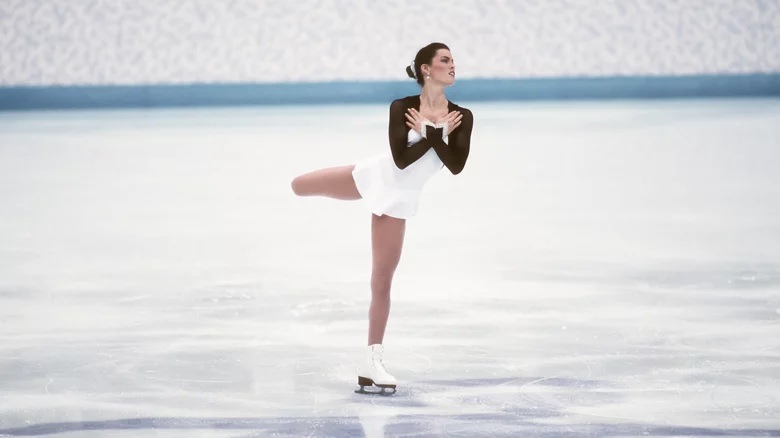
In 1994, American figure skater Nancy Kerrigan suffered a leg injury when she was attacked by an assailant hired by the ex-husband of her rival, Tonya Harding. The incident, known as "The Whack Heard Round the World," took place during a practice session for the U.S. Figure Skating Championships in Detroit. As Kerrigan was leaving the ice, she was hit on the knee with a metal baton by Shane Stant, who had been hired by Harding's ex-husband, Jeff Gillooly. The attack caused a bruise and a strained ligament in Kerrigan's leg, but she was able to recover in time for the Winter Olympics in Lillehammer, Norway, where she won a silver medal. Harding, who had also qualified for the Olympics, finished in eighth place and later pleaded guilty to hindering the prosecution of those responsible for the attack. The incident became one of the biggest scandals in sports history and led to increased security measures at figure skating competitions.
#2 Sa Jae-Hyouk’s horrifying elbow injury
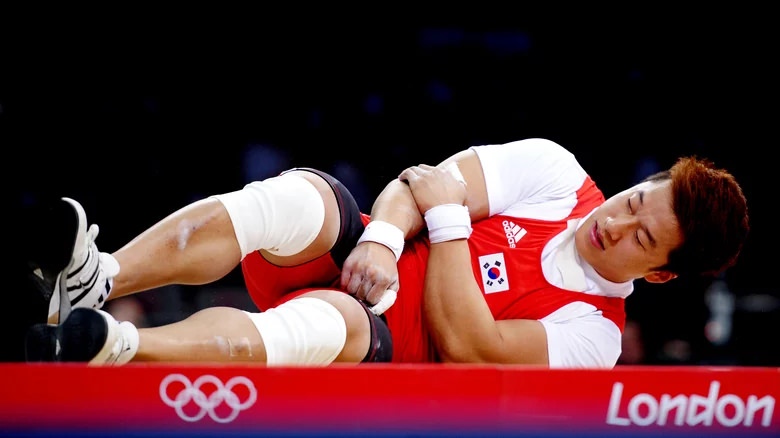
Sa Jae-Hyouk is a weightlifter from South Korea who suffered a shocking injury during the 2012 London Olympics. While competing in the 77kg weightlifting category, Sa attempted to lift 162kg during his second snatch attempt. As he lifted the weight, he suddenly dropped it and collapsed, screaming in agony.
It turned out that Sa had dislocated his right elbow, and the injury was so severe that his arm was bent at an unnatural angle. The incident was so traumatic that many viewers could not bear to watch the replay. Medical personnel rushed to his side, and they immediately put his arm in a splint and took him to the hospital.
Unfortunately, the injury was so severe that Sa was forced to withdraw from the competition. He underwent surgery to repair the damage and was out of commission for several months while he recovered. Despite the injury, Sa remained optimistic and promised to come back even stronger, which he did by winning the gold medal in the same weight category at the 2014 Asian Games.
#3 Derek Redmond’s hamstring injury
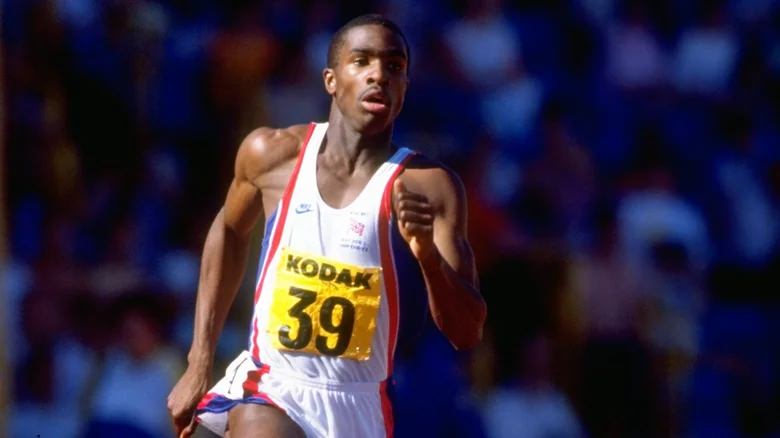
Derek Redmond's hamstring injury is one of the most memorable moments in Olympic history. During the semifinals of the 400-meter race at the 1992 Barcelona Olympics, Redmond was running strong and looking like a contender for the gold medal. However, around the 250-meter mark, he suddenly pulled up with a hamstring injury and fell to the ground in pain.
Despite the obvious agony he was in, Redmond was determined to finish the race. He got back to his feet and began hobbling down the track, with the other athletes long gone and the crowd watching in stunned silence. As he limped towards the finish line, a man rushed onto the track and pushed past security to join him - it was his father, Jim Redmond.
Together, the father and son made their way to the finish line, with Derek hobbling and his father supporting him. It was an emotional and unforgettable moment, as the crowd gave them a standing ovation and cheered them on. Although he finished last, Derek Redmond became an inspiration to millions of people around the world, showing that even in the face of adversity, determination and perseverance can overcome anything.
#4 Janos Baranyai’s gruesome elbow dislocation,
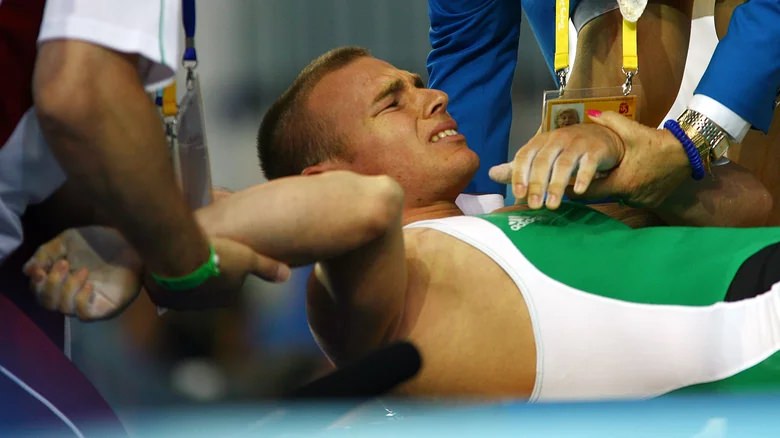
Janos Baranyai is a Hungarian weightlifter who experienced a gruesome elbow dislocation during the 2008 Beijing Olympics. During his second lift in the men's 77kg weightlifting competition, Baranyai attempted to lift 148kg (326 lbs) but his left elbow buckled under the weight causing his arm to bend in the opposite direction. The crowd gasped in shock as Baranyai screamed in pain on the floor. Medical staff rushed to his aid and quickly immobilized his arm before transporting him to a nearby hospital. The injury ended Baranyai's Olympic dreams, and he was forced to withdraw from the competition. Despite the horrific injury, Baranyai remained stoic and composed as he was being attended to by the medical staff, earning praise for his bravery in the face of adversity.
#5 Samir Ait Said’s shattered leg

Samir Ait Said, a French gymnast, suffered a gruesome leg injury during the qualification rounds for the men's gymnastics competition at the 2016 Rio Olympics. During his vault routine, Said landed awkwardly on the mat and his left leg snapped, the sound of the injury audible throughout the arena. Said screamed in agony as medical personnel rushed to his aid and carried him off on a stretcher. He was later diagnosed with a broken tibia and fibula, effectively ending his Olympic dreams. The injury was particularly devastating for Said, who had also missed out on the 2012 Olympics due to a fracture in his right leg. Despite the injury, Said remained optimistic and determined to make a comeback, stating that he would "do everything to come back stronger."
#6 Kevin Pearce’s traumatic brain injury

Kevin Pearce, a professional snowboarder from the United States, suffered a severe traumatic brain injury (TBI) while training for the 2010 Winter Olympics in Park City, Utah. In December 2009, Pearce was practicing a trick called a double cork when he landed headfirst on the halfpipe and suffered a traumatic brain injury that left him in critical condition. He was airlifted to a hospital and underwent emergency brain surgery. Despite the surgery, Pearce remained in a medically induced coma for over a month.
Pearce's injury was so severe that it effectively ended his professional snowboarding career. He had been considered one of the top snowboarders in the world and was a medal contender for the 2010 Winter Olympics. However, the TBI left him with permanent brain damage, affecting his speech, vision, and balance. Pearce has since become an advocate for brain injury awareness and prevention, speaking publicly about his own experiences and the importance of wearing helmets during high-risk activities.
#7 Ervin Zador: Blood in the Water
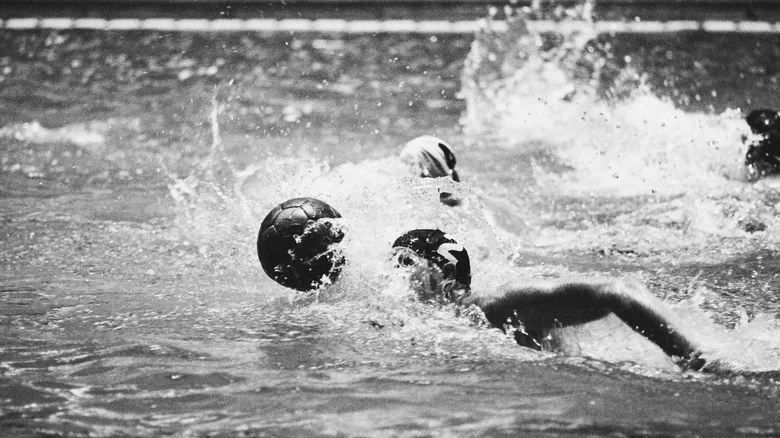
Ervin Zador was a Hungarian water polo player who became famous for his role in the infamous "Blood in the Water" match at the 1956 Melbourne Olympics. During a match against the Soviet Union, tensions between the two teams boiled over and a physical altercation broke out, resulting in Zador being punched in the eye and bleeding profusely. Despite his injury, Zador continued to play and even scored a goal, helping Hungary to a 4-0 victory. The incident became a symbol of Hungarian resistance against Soviet aggression, as the country was in the midst of a revolution at the time. Zador's injury required several stitches and he was forced to retire from water polo shortly thereafter. The "Blood in the Water" match remains one of the most memorable moments in Olympic history.
#8 Lazaro Borges’ near miss
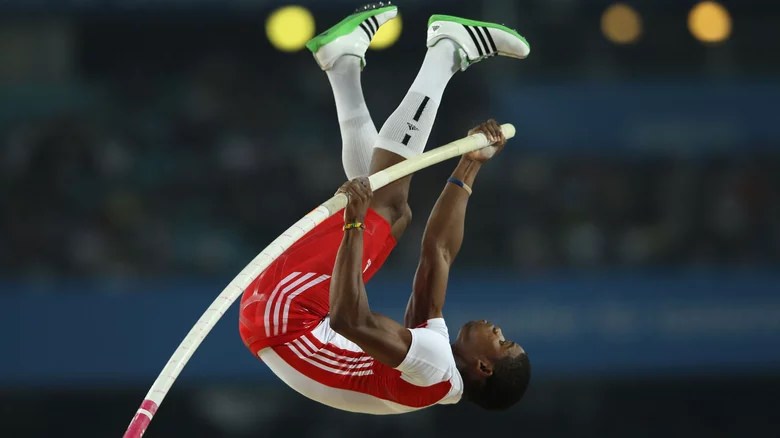
Lazaro Borges is a Cuban pole vaulter who had a near-miss incident during the 2012 Olympics in London. During the qualifying rounds, Borges attempted to clear a height of 5.35 meters when suddenly, his pole snapped in half. The top section of the pole, which was still attached to Borges' hands, flew dangerously close to his face and neck as he fell to the mat.
Thankfully, Borges was able to avoid serious injury, and he was seen giving thanks and making the sign of the cross after the incident. Despite the scare, he went on to compete in the finals but did not medal. The incident highlighted the dangers that pole vaulters face and the importance of using properly maintained equipment.
#9 Markus Schairer’s broken neck
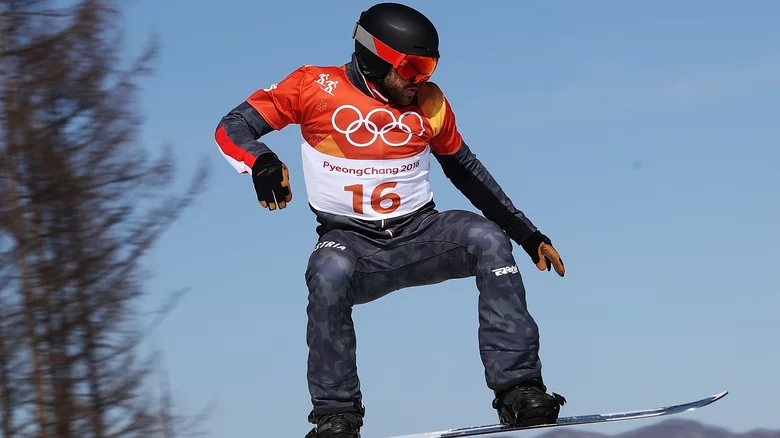
Markus Schairer is an Austrian snowboarder who suffered a broken neck during the men's snowboard cross quarterfinals at the 2018 Winter Olympics in Pyeongchang. Schairer was racing down the course when he lost control of his board and flew off a jump, landing hard on his back and head. The impact was so severe that he fractured the fifth cervical vertebra in his neck. Despite the injury, Schairer managed to get back up and finish the race in fourth place.
Schairer was immediately taken to the hospital, where he underwent surgery to stabilize his neck with a metal plate and screws. He also suffered a concussion and lost feeling in his arms temporarily, but fortunately, he did not suffer any permanent neurological damage. Schairer was forced to withdraw from the competition and returned to Austria for further medical treatment.
The incident was a stark reminder of the dangers of extreme winter sports, but Schairer's resilience and determination in finishing the race despite his injury were also celebrated as a testament to the spirit of the Olympic Games.
#10 Annemiek van Vleuten’s devastating fall

Annemiek van Vleuten's devastating fall happened during the women's road race at the 2016 Rio Olympics. Van Vleuten, a Dutch cyclist, was leading the race when she crashed on a steep descent, hitting her head and sustaining severe injuries. The crash was so severe that it was initially reported that she had died.
Van Vleuten was immediately taken to a nearby hospital where it was discovered that she had suffered three fractures to her spine and a severe concussion. She spent several days in the hospital recovering from her injuries before being released.
The crash sparked a renewed discussion about safety in cycling, with many questioning whether the course was too dangerous for the athletes. Despite her injuries, van Vleuten made a remarkable recovery and was back racing just two months later.
#11 Nicolas Bochatay’s fatal accident

Nicolas Bochatay was a Swiss alpine skier who tragically died in a training accident in 2008. He was practicing on a glacier in Saas-Fee, Switzerland when he lost control and crashed into a snowcat, which is a large, tracked vehicle used for grooming ski slopes. The impact was so severe that Bochatay suffered severe head and chest injuries and was pronounced dead shortly after being airlifted to a hospital in Visp. The accident was later attributed to a lack of proper communication between the ski team and the maintenance crew, as well as inadequate safety precautions. Bochatay was only 27 years old at the time of his death, and his passing sent shockwaves through the skiing community.
#12 Kerri Strug’s ankle injury
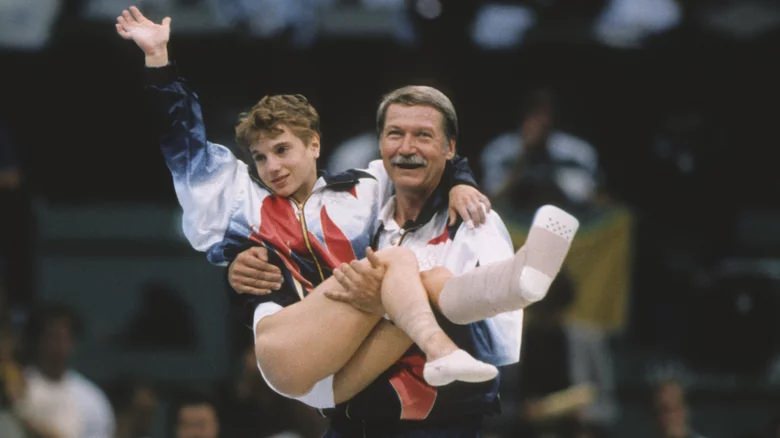
Kerri Strug's ankle injury is one of the most memorable moments in Olympic history. During the 1996 Summer Olympics in Atlanta, Strug was part of the US women's gymnastics team competing in the team finals. On her first vault, she landed awkwardly and fell to the ground, injuring her ankle. Despite the injury, Strug knew she needed to land her second vault to secure the gold medal for her team. With her ankle taped up and in extreme pain, Strug completed her second vault, landing on one foot before collapsing to the ground.
The moment has since become iconic, with Strug being carried to the podium by her coach, Bela Karolyi, to receive her team's gold medals. Strug's bravery and determination in the face of injury have inspired countless athletes and fans around the world.
#13 Nodar Kumaritashvili’s fatal luge accident
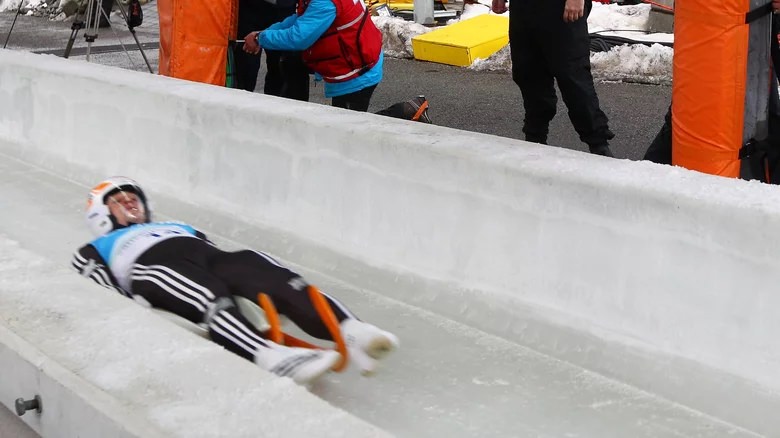
On February 12, 2010, Georgian luger Nodar Kumaritashvili suffered a fatal accident during a training run just hours before the opening ceremony of the 2010 Winter Olympics in Vancouver, Canada. The 21-year-old athlete was going at speeds of up to 90 miles per hour when he lost control of his sled and flew off the track, crashing into a steel pole. He was immediately airlifted to the hospital, but his injuries were too severe, and he was pronounced dead on arrival.
The incident caused a significant amount of controversy and debate regarding the safety of the luge track, with some athletes stating that it was too fast and too dangerous. In response to the tragedy, changes were made to the track to make it safer, and all subsequent runs were conducted with reduced speeds.
Kumaritashvili's death was a devastating loss for the Olympic community, and he was honored with a moment of silence during the opening ceremony of the games. His memory continues to live on through the Nodar Kumaritashvili Fund, which was established to provide support for Georgian athletes and to promote sportsmanship and fair play.
#14 J.R. Celski’s horrific thigh gash

J.R. Celski is an American short track speed skater who suffered a horrific thigh gash during a race at the 2010 Winter Olympics in Vancouver. During the 5000-meter relay semifinals, Celski was involved in a pileup with several other skaters and one of his competitors accidentally sliced open his thigh with his skate blade. The injury was severe, and Celski could see the bone through the wound. He was rushed to the hospital and underwent emergency surgery to repair the muscle and tissue damage. Remarkably, Celski was able to recover from the injury and went on to win two bronze medals in the 1500-meter and 5000-meter relay events at the same Olympics.
#15 Nibali crash during road race
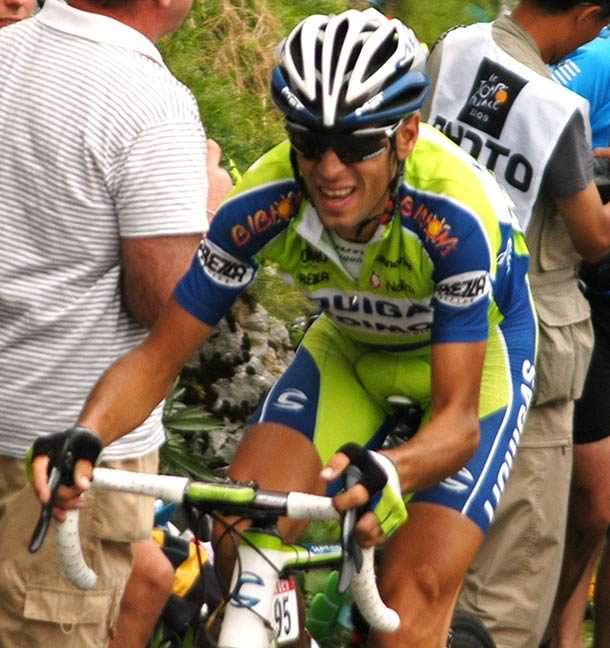
Vincenzo Nibali is a professional cyclist from Italy who has won multiple grand tours in his career. During the 2016 Olympics in Rio de Janeiro, Brazil, Nibali participated in the men's road race. However, his race was cut short due to a serious crash.
The incident occurred during the descent of the Vista Chinesa climb. Nibali was leading a group of riders down a steep and winding road when he lost control of his bike and crashed into a barrier. He suffered a fractured collarbone and was forced to abandon the race.
The crash was caused by a combination of factors, including the difficult course conditions, the speed at which Nibali was traveling, and a lack of visibility on the road. The accident was a devastating blow to Nibali, who had trained extensively for the race and had hoped to add an Olympic medal to his already impressive resume.
#16 Ellie Downie neck injury during floor routine
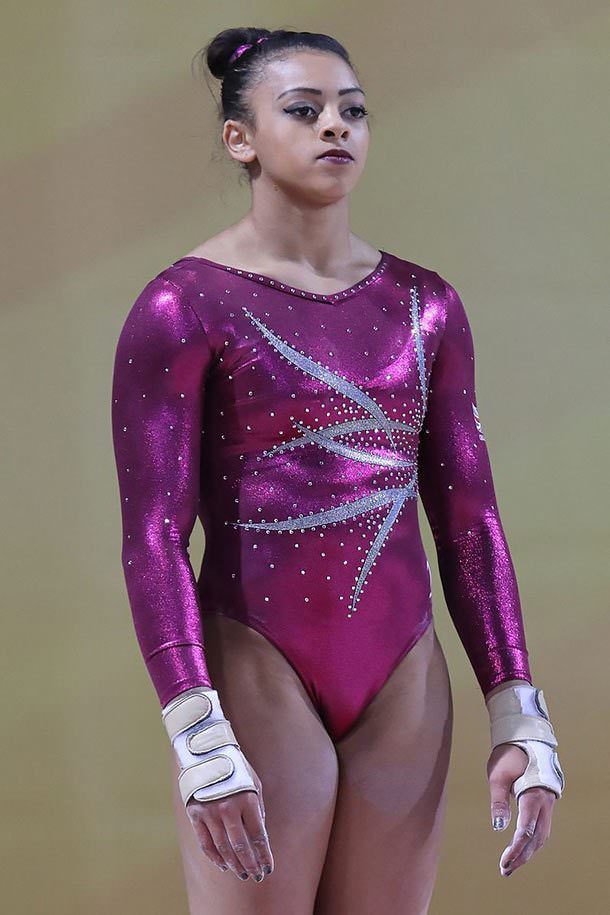
Ellie Downie is a British artistic gymnast who made history as the first British gymnast to win a medal at the all-around European Championships. However, during a training session for the 2019 European Championships, Downie suffered a serious neck injury during her floor routine.
Downie was performing a tumbling pass, which involved a double layout with a full twist, when she landed awkwardly on her neck and immediately collapsed to the ground. The arena fell silent as medical staff rushed to her aid. Downie was stretchered off the floor and taken to a nearby hospital for further evaluation.
Fortunately, scans showed no major damage to Downie's neck, but she was forced to withdraw from the competition. In a statement released on social media, Downie thanked everyone for their messages of support and said that she was "heartbroken" to have to pull out of the competition. She also acknowledged that gymnastics is a high-risk sport and that injuries are an unfortunate part of the sport.
#17 Kristen Maloney’s several injuries

Kristen Maloney is a retired American gymnast who competed at the international level from the late 1990s to the early 2000s. Throughout her career, Maloney faced several injuries that forced her to take time off from training and competition.
One of the most significant injuries Maloney experienced was a broken leg that she sustained during a floor exercise routine at the 1998 Goodwill Games. The injury was severe, and she required surgery to insert a metal rod into her leg to stabilize the bone. She was unable to train for several months and missed the 1998 World Championships as a result.
Maloney also suffered a severe ankle injury while training for the 2000 Olympics. She fractured both her tibia and fibula and required surgery to repair the damage. Despite the injury, she was able to recover in time to compete at the Sydney Olympics, where she helped the US women's gymnastics team win the bronze medal.
In 2001, Maloney suffered a torn Achilles tendon while training on the balance beam. The injury required surgery and an extensive rehabilitation period. She was unable to compete for over a year but was able to make a comeback in time for the 2003 World Championships.
Finally, in 2004, Maloney suffered another ankle injury during training, which forced her to withdraw from the US Olympic Trials. This injury effectively ended her competitive gymnastics career.
#18 Liu Xiang’s Achilles tendon injury
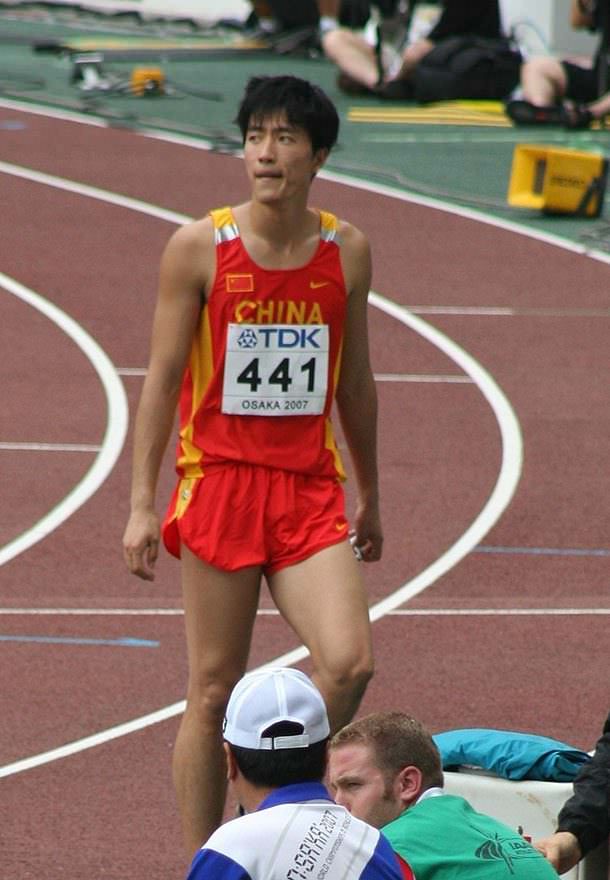
Liu Xiang is a former Chinese track and field athlete who specialized in the 110-meter hurdles. He is one of China's most successful athletes and won the gold medal in the 110-meter hurdles at the 2004 Athens Olympics. However, he suffered a significant injury that forced him to withdraw from the 2008 Beijing Olympics.
In 2008, Liu Xiang was considered one of the favorites to win the gold medal in the 110-meter hurdles at the Beijing Olympics. However, during his warm-up before the event, he suffered a severe Achilles tendon injury in his right leg. The injury was a rupture of the Achilles tendon, which is a crucial tendon that connects the calf muscles to the heel bone.
After the injury, Liu Xiang was helped off the track and was unable to compete in the event. He later underwent surgery to repair the ruptured tendon, which involved stitching the torn ends of the tendon back together.
The recovery from an Achilles tendon injury can be a lengthy process, and it often requires a significant amount of rehabilitation to regain strength and flexibility in the affected leg. Liu Xiang spent several months in rehabilitation after his surgery and was unable to compete for over a year. Although he attempted to make a comeback to competition, Liu Xiang continued to struggle with injuries and was forced to retire from competitive athletics in 2015. His Achilles tendon injury at the 2008 Beijing Olympics is often cited as one of the most significant moments in Chinese sports history, as it highlighted the intense pressure and expectations that athletes face when competing on home soil at a major international event.
#19 Zhang Dan and Zhang Hao epic fall on the ice
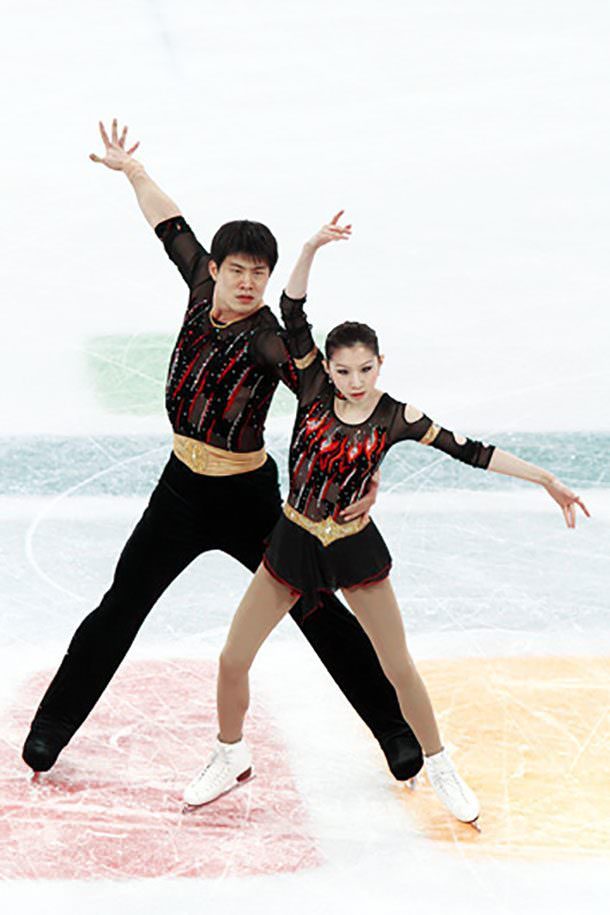
Zhang Dan and Zhang Hao are former Chinese figure skaters who specialized in pairs skating. They were one of the most successful pairs skating teams in Chinese history and won the silver medal at the 2006 Turin Winter Olympics.
However, one of the most memorable moments of their career came during the short program at the 2007 World Figure Skating Championships. During their routine, they attempted a quadruple twist lift, which involves the male skater lifting the female skater and spinning her four times in the air before catching her.
Unfortunately, during the lift, Zhang Dan's skate blade caught on Zhang Hao's trousers, causing him to lose his balance and fall to the ice with her in his arms. The fall was epic, as they fell from a significant height and skidded across the ice before coming to a stop.
Despite the fall, Zhang Dan and Zhang Hao quickly got back to their feet and continued their routine. They completed the rest of their program with grace and poise, earning a standing ovation from the crowd.
The fall was a reminder of the risks and challenges that pairs skaters face when attempting complex lifts and maneuvers on the ice. However, it also demonstrated the resilience and determination of athletes who are able to recover from setbacks and continue to perform at the highest level. The moment has become a famous example of the spirit of sportsmanship and perseverance that is often celebrated in figure skating and other athletic competitions.
#20 Manteo Mitchell breaks his leg at the London Olympics
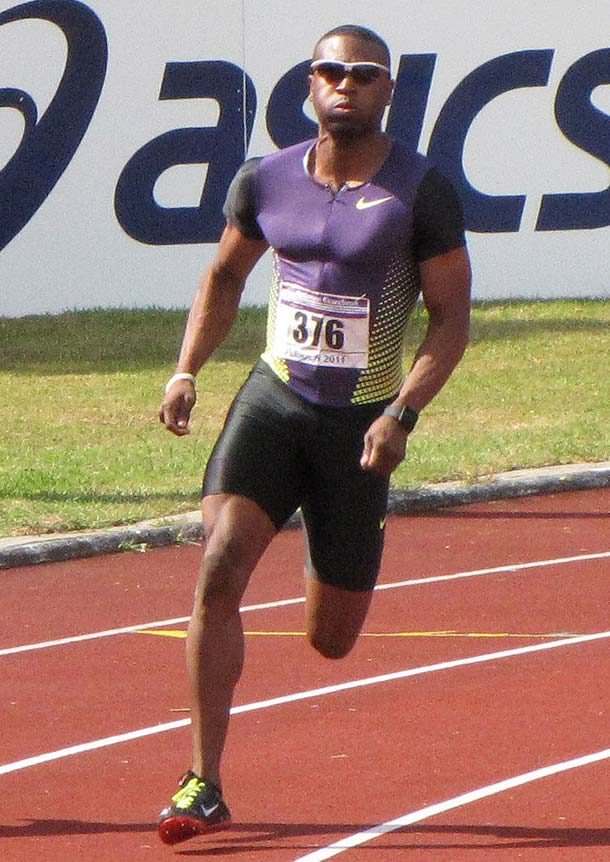
Manteo Mitchell is an American track and field athlete who competed in the 2012 London Olympics. During the preliminary heat of the 4x400m relay, Mitchell suffered a significant injury that shocked the sports world.
Around the 200m mark of his leg of the relay, Mitchell heard a loud pop in his left leg. Despite feeling intense pain, he continued to run and completed his lap in 46.1 seconds, handing the baton to his teammate before collapsing on the track. After the race, it was revealed that Mitchell had broken his left fibula, one of the two long bones in the lower leg. The injury was severe, and he required surgery to repair the broken bone.
Despite the injury, Mitchell's determination and resilience became an inspiration to many. He later revealed that he had made the split-second decision to continue running because he knew that his team was depending on him to complete his leg of the relay. He also expressed gratitude to his teammates, who rallied around him and supported him during and after the race.
Mitchell's injury and his decision to continue running have become a symbol of the grit and determination that is often celebrated in sports. His display of bravery and selflessness has earned him admiration and respect from athletes and fans around the world, and his story has become an inspiration to many who face adversity and setbacks in their own lives.
#21 Paul Georg’s horrible leg injury

Paul George is an American professional basketball player who currently plays for the Los Angeles Clippers in the NBA. In 2014, while playing for the US national team during a scrimmage in preparation for the FIBA World Cup, George suffered a horrific leg injury that left him with a compound fracture of his right tibia and fibula.
During the scrimmage, George attempted to block a shot and landed awkwardly, with his leg hitting the base of the stanchion behind the basket. The impact caused his leg to bend at an unnatural angle, and he fell to the ground in agony.
The injury was immediately recognized as serious, and George was rushed to the hospital for surgery. The injury required a metal rod to be inserted into his leg to stabilize the bones, and he was left with a long and grueling rehabilitation process.
Despite the severity of the injury, George was determined to return to basketball and worked tirelessly to regain his strength and mobility. He eventually returned to the court in April 2015, less than eight months after the injury, and was able to resume his successful basketball career.
#22 Katie Glynn hit in the head with a hockey stick

Katie Glynn is a former American field hockey player who played for the University of Maryland. In a game against Duke University in 2010, she suffered a significant injury after being hit in the head with a hockey stick.
During the game, Glynn was playing defense when she collided with a Duke player. As they fell to the ground, the Duke player's stick struck Glynn in the head, causing a skull fracture and a severe brain injury.
Glynn was rushed to the hospital, where she underwent emergency surgery to relieve the pressure on her brain. She remained in a coma for several weeks and underwent months of rehabilitation before being able to speak and walk again.
Despite the severity of her injury, Glynn was determined to continue playing field hockey and returned to the field after a two-year hiatus. She later became an advocate for concussion awareness and worked to raise awareness about the dangers of head injuries in sports.
Glynn's injury highlights the risks and dangers associated with contact sports such as field hockey. It also emphasizes the importance of proper safety measures and equipment, such as helmets and protective gear, in preventing and minimizing the severity of head injuries. Her story also serves as a reminder of the importance of athlete safety and the need for continued efforts to protect athletes from the risks of sports-related injuries.
#23 Mariela Scarone’s bloody face injury

Mariela Scarone is an Argentine field hockey player who played for her country in the 2016 Rio Olympics. During a game against the United States, Scarone suffered a severe injury to her face that left her with a bloody and swollen face.
The injury occurred when Scarone was struck in the face by a stick during a play, causing a deep cut on her forehead. Despite the injury, Scarone remained on the field and continued to play, showing incredible resilience and toughness. After the game, Scarone required multiple stitches to close the wound and was left with a significant scar. However, she remained positive and grateful for the opportunity to represent her country in the Olympics.
Scarone's injury highlights the physical demands and risks associated with field hockey, a sport that involves close contact and the use of sticks. It also demonstrates the dedication and resilience of athletes who are willing to continue playing through injuries and setbacks. Scarone's display of toughness and courage has inspired many fans and athletes alike and serves as an example of the determination and spirit that is often celebrated in sports.
#24 Greg Louganis injures head while trying to take a dive

Greg Louganis is a former American diver who is widely considered one of the greatest divers of all time. In the 1988 Seoul Olympics, Louganis suffered a significant injury during the preliminary rounds of the 3-meter springboard competition. During his second dive, a reverse 2 1/2 somersault, Louganis hit his head on the diving board, causing a deep gash above his right eye. The injury was severe, and he required several stitches to close the wound.
Despite the injury, Louganis continued to compete, going on to win the gold medal in the 3-meter springboard and the platform diving events. His determination and courage in the face of adversity were celebrated by fans and athletes around the world.
Louganis' injury highlighted the risks and dangers associated with diving, a sport that involves complex acrobatic maneuvers and high levels of physical skill and precision. It also demonstrated the importance of athlete safety and the need for proper training and equipment to minimize the risk of injury.
#25 Talgat Ilyasov’s awful elbow injury

Talgat Ilyasov is a Kazakhstani weightlifter who suffered a significant injury during the 2018 Asian Games in Jakarta, Indonesia. During the snatch event of the men's 105kg weightlifting competition, Ilyasov attempted to lift 193kg (425lbs) but lost his balance and fell backwards onto his right elbow.
The impact caused a horrific injury to Ilyasov's elbow, with his arm bending unnaturally and the bone protruding through the skin. The injury was so severe that the competition was immediately stopped, and Ilyasov was rushed to the hospital for emergency treatment.
After undergoing surgery to repair the damage, Ilyasov faced a long and difficult rehabilitation process. He was unable to compete for several months and was forced to withdraw from several major competitions. Ilyasov's injury highlights the risks and dangers associated with weightlifting, a sport that requires a high level of physical strength and precision. It also demonstrates the importance of proper technique and training in preventing and minimizing the risk of injury.
Despite the severity of his injury, Ilyasov remained positive and determined to make a comeback to weightlifting. He eventually returned to competition and continued to compete at the highest level, showing incredible resilience and perseverance in the face of adversity.
#26 Adrienne Nyeste had a bad fall at the Sydney Olympics
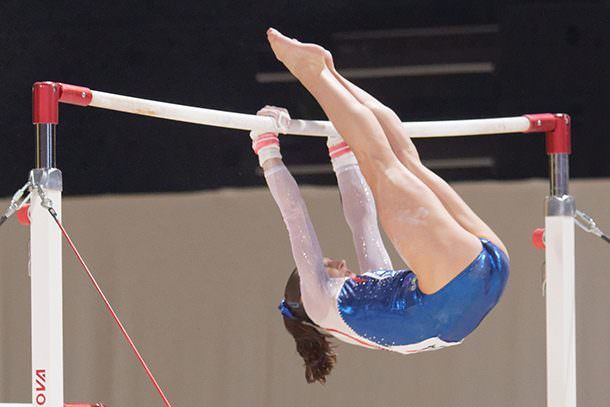
Adrienne Nyeste is a former American gymnast who competed at the international level in the late 1990s and early 2000s. During the qualification round of the women's artistic gymnastics team competition at the 2000 Sydney Olympics, Nyeste suffered a significant injury after a bad fall.
During her routine on the uneven bars, Nyeste lost her grip on the bars while attempting a release move and fell to the mat from a height of around 8 feet (2.4 meters). The impact was severe, and she was immediately attended to by medical staff.
Nyeste was diagnosed with a dislocated left elbow and a broken arm, injuries that required surgery and months of rehabilitation to recover from. Despite the setback, she continued to train and compete at the elite level for several more years, showing incredible resilience and determination in the face of adversity.
#27 Andreas Tobas buckled during a gutsy performance
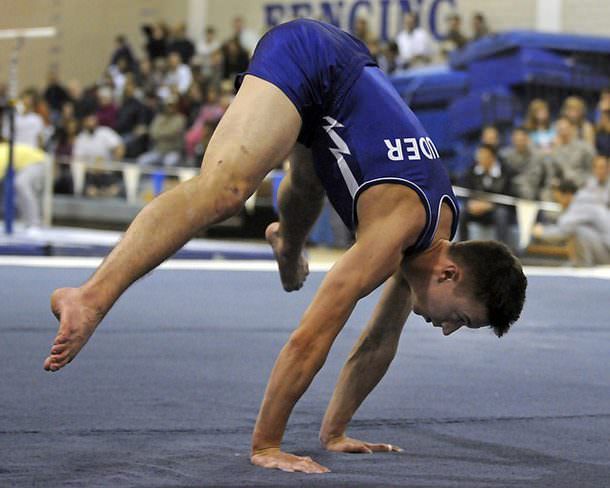
Andreas Toba is a German artistic gymnast who competed at the 2016 Rio Olympics. During the men's team competition, Toba suffered a significant injury after landing awkwardly during his floor exercise routine.
During his routine, Toba landed awkwardly after a tumbling pass, and his right knee buckled under him. Despite the injury, he continued his routine, completing the rest of his performance with remarkable poise and grace. After the routine, Toba was taken to the hospital, where he was diagnosed with a torn anterior cruciate ligament (ACL) in his right knee. The injury was severe and required surgery and months of rehabilitation to recover from.
Despite the setback, Toba's display of courage and determination in the face of injury was celebrated by fans and athletes around the world. His willingness to push through the pain and complete his routine showed incredible resilience and dedication to his sport.



